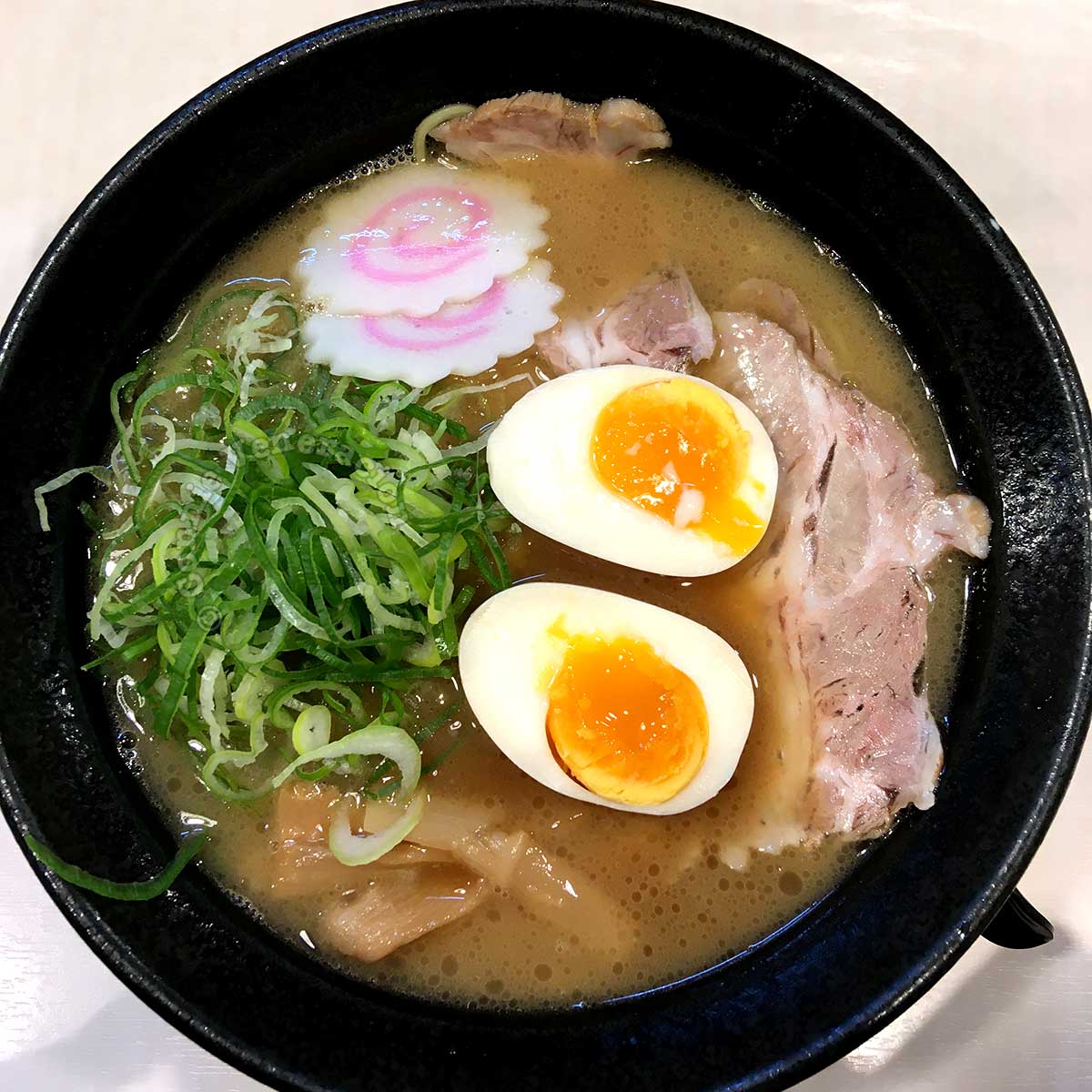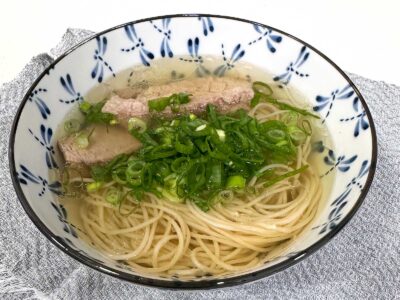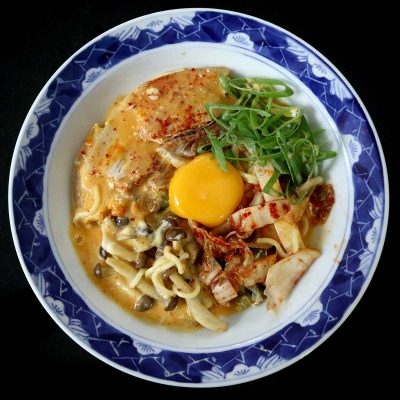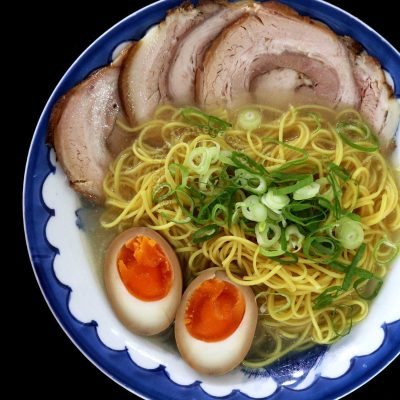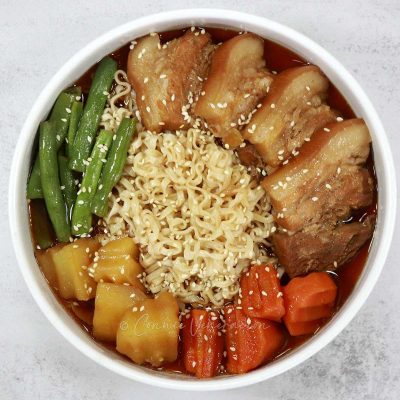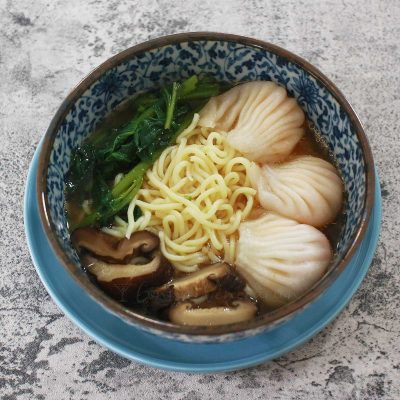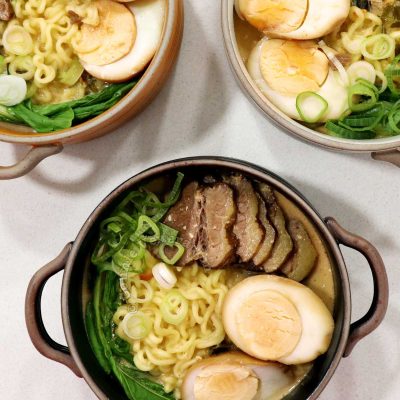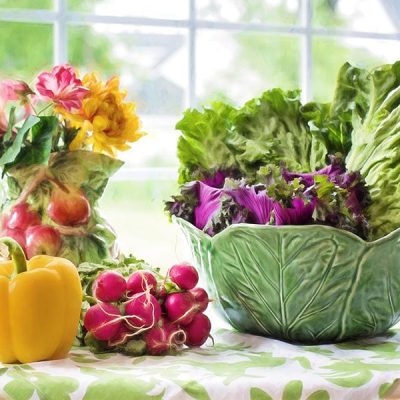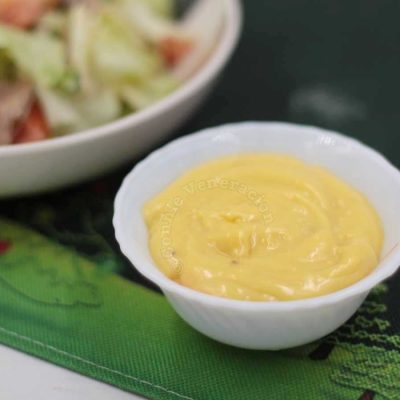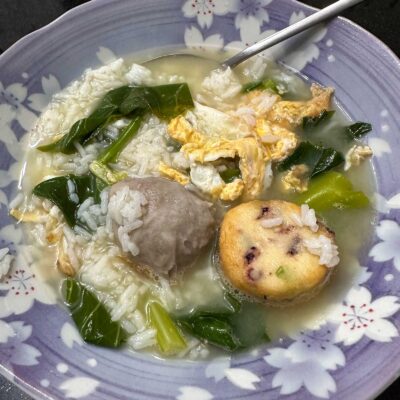I originally wrote this guide to ramen broth back in December of 2016. I’ve visited Japan twice since then and enjoyed countless bowls of ramen in Kyoto and Osaka. And the journey to understand ramen even included a visit to Kyoto Ramen Street where ramen from every region of Japan is served. An update to my guide to ramen broth is in order.
What’s new in this ramen guide?
1. A more comprehensive classification of ramen broth that differentiates between:
- The base of the broth and
- The seasonings of the broth
2. The noodles. Yes, there is more than one kind.
I’m not claiming though that this is the ultimate ramen guide. I don’t know of anyone who knows absolutely everything about ramen (in fact, I don’t know of anyone who knows absolutely everything about anything). After all, ramen as a dish is always evolving as with the case of curry and miso ramen which are pretty recent incarnations of the Japanese noodle soup. But more on that later. I’m just saying that, today, I understand ramen much better than I did years ago.
Understanding ramen broth
For the longest time, I was under the impression that ramen broth is made with pork or beef bones, or both. I’ve come across chicken ramen once in a while but that was rare. Then, one late afternoon in Osaka, we were walking back to our apartment and we passed by a ramen shop that completely changed my understanding of ramen.
The base of ramen broth can be meat, poultry or seafood
The ramen shop, Mentenshyou, is in Chuo ward. We were so taken by the tarps displayed out front but, despite encouragement from the guy at the front door, we were still too full to go in and sit down to another meal. The guy understood and handed us brochures instead. We accepted them gratefully and noted that the ramen shop has delivery service.
We reached our apartment and, for lack of anything useful to do, we scrutinized the brochures. You guessed right, perhaps? About two hours later, Speedy and Alex (that’s my husband and younger daugher) walked to the ramen shop and came back with a ton of food and plenty of useful information.
Alex excitedly announced that, at the shop, one could choose the base of the ramen broth. Pork, beef, chicken or seafood. Because her sister, Sam, is mostly vegetarian and an occasional pescatarian, Alex ordered seafood-based ramen for her.
So, we had been classifying ramen broth incompletely, if not incorrectly.Shoyu, shio, karē and miso are the seasonings rather than the base of the broth. Tonkotsu is a league all its own.
How ramen broth is flavored
So, ramen broth can be made with pork or beef, chicken, fish or other seafood. How the broth is seasoned is largely influenced by its base.
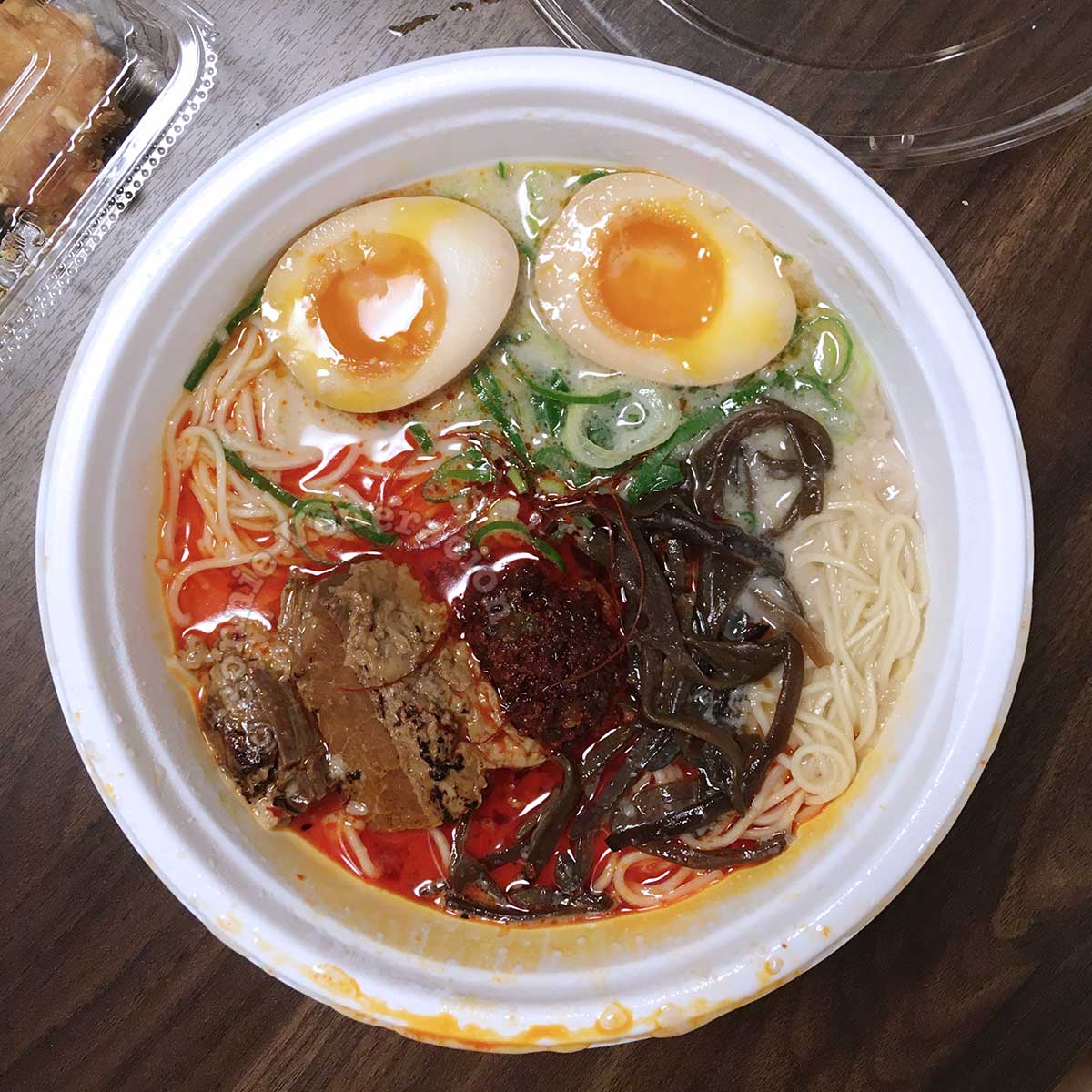
Note that this list does NOT include Chinese-influenced Japanese noodle soups such as the spicy tantanmen. Chinese-influenced ramen dishes are so varied that they deserve a separate discussion.
Shio Ramen
Shio means salt. Shio ramen’s broth is made with chicken or fish bones (pork bones are sometimes added too), vegetables and salt. Shio ramen broth is pale to golden yellow depending on what bones and vegetables are used, and in what proportion.
How to make broth for shio ramen
It’s all about the broth. The clarity. The lightness. I make broth by simmering meat and bones. Then, I drop a teaspoon of salt into a bowl, pour in broth and add the noodles.
Shoyu Ramen
Shoyu is soy sauce. Shoyu ramen has broth made with soy sauce. And when I say “made with soy sauce”, I don’t mean that soy sauce is merely added to the cooked broth. Soy sauce is added to a pot of bones (usually chicken), vegetables and water, and everything is simmered together to make a light brown broth. Shoyu ramen was my favorite until I discovered tonkotsu ramen.
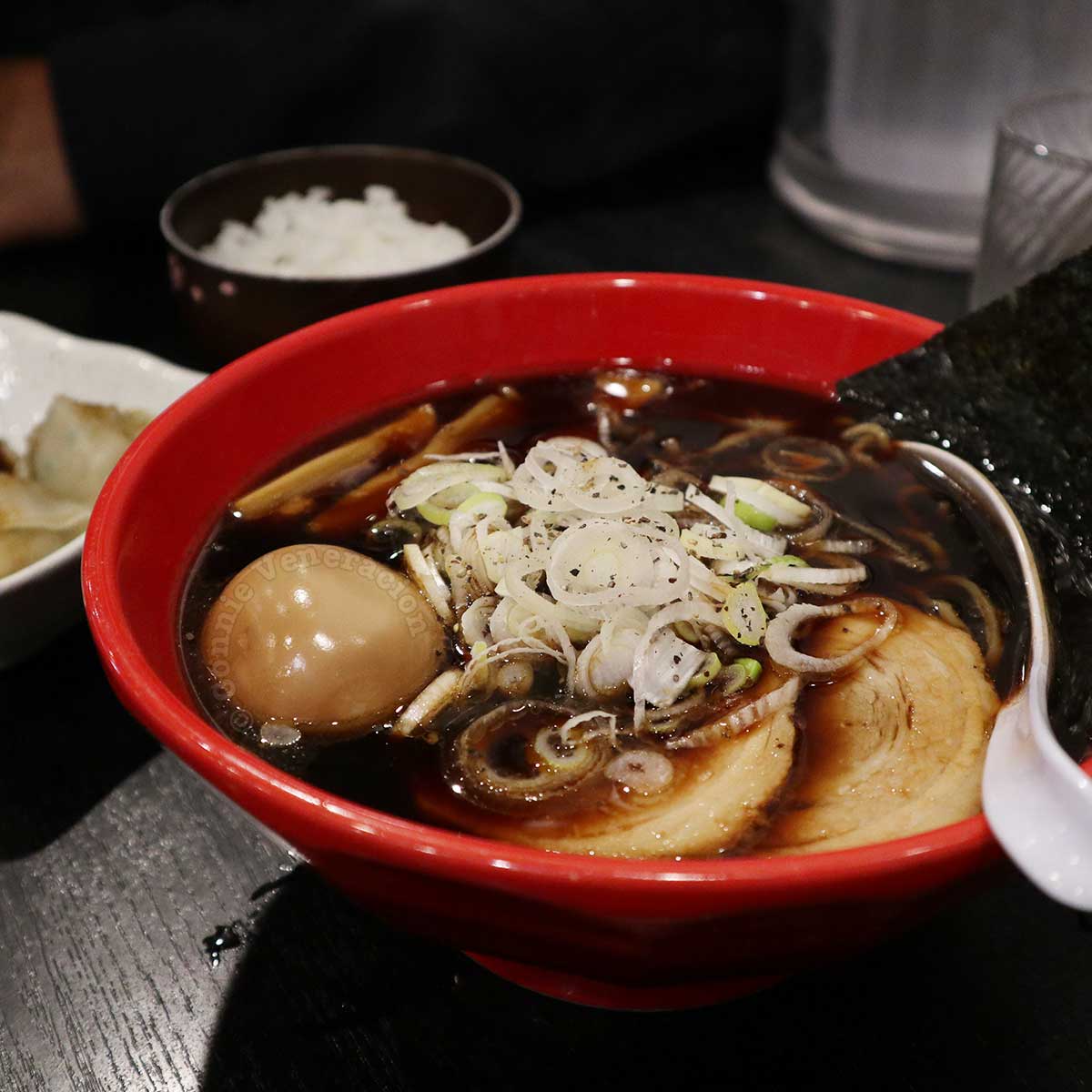
Shoyu broth and shio broth are clear. By “clear”, I mean not opaque and milky like tonkotsu.
Miso Ramen
Miso ramen broth may be clear broth (shio or shoyu) or tonkatsu broth to which a generous amount of miso paste is added. Miso ramen broth is a sweet-tangy thick liquid.
Where does the sweet-tangy flavor come from? Miso is a paste made by fermenting soy beans. The fermentation processis essentially where the tangy flavor comes from. The sweet component is derived, at least generally, from the other ingredients added to the soy beans during fermentation.
Karē (Curry) Ramen
Curry ramen and miso ramen are younger incarnations of the Japanese noodle soup. Both were born in Hokkaido during the second half of the 1900s.
Just like miso ramen, curry ramen broth may be clear (shio or shoyu) or opaque and milky (tonkotsu). Curry paste is added for a different dimension of spice experience.
Tonkotsu Ramen
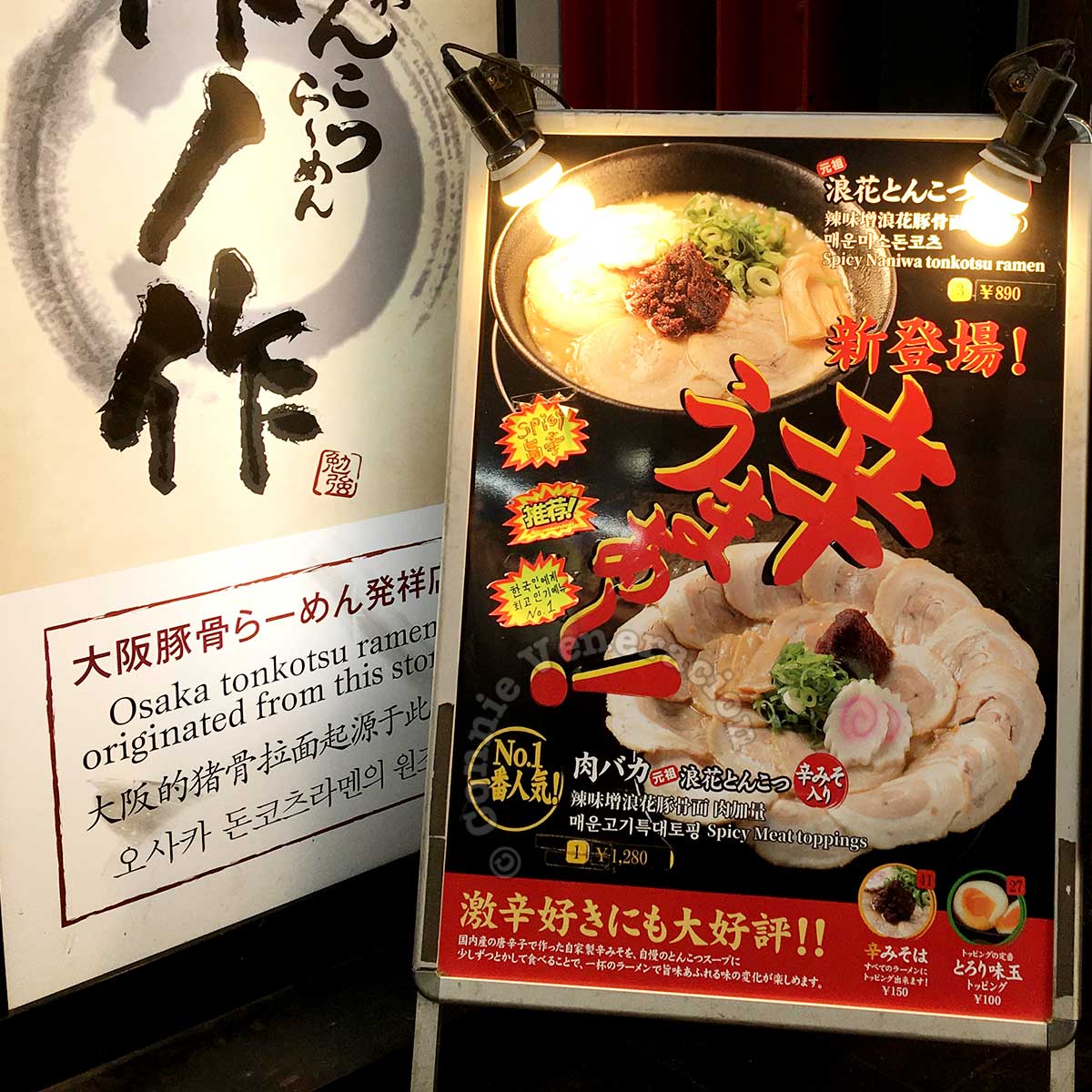
Tonkotsu ramen broth (no, it is not the same as tonkatsu) is opaque and milky in appearance. Why it looks that way deserves more than a cursory explanation.
Tonkotsu ramen broth is made with pork bones—in particular, pork hock and trotters. They are boiled for several hours until the collagen and fat break down and liquefy. Collagen, found in the bones and in the tendons that surround the bones, makes the broth dense and slightly sticky. Collagen and fat, together, turn the liquid milky and opaque.
How long do the bones have to be cooked? Mine took ten hours. On the stovetop. Over medium heat. Let me explain.
How to make tonkotsu ramen broth at home
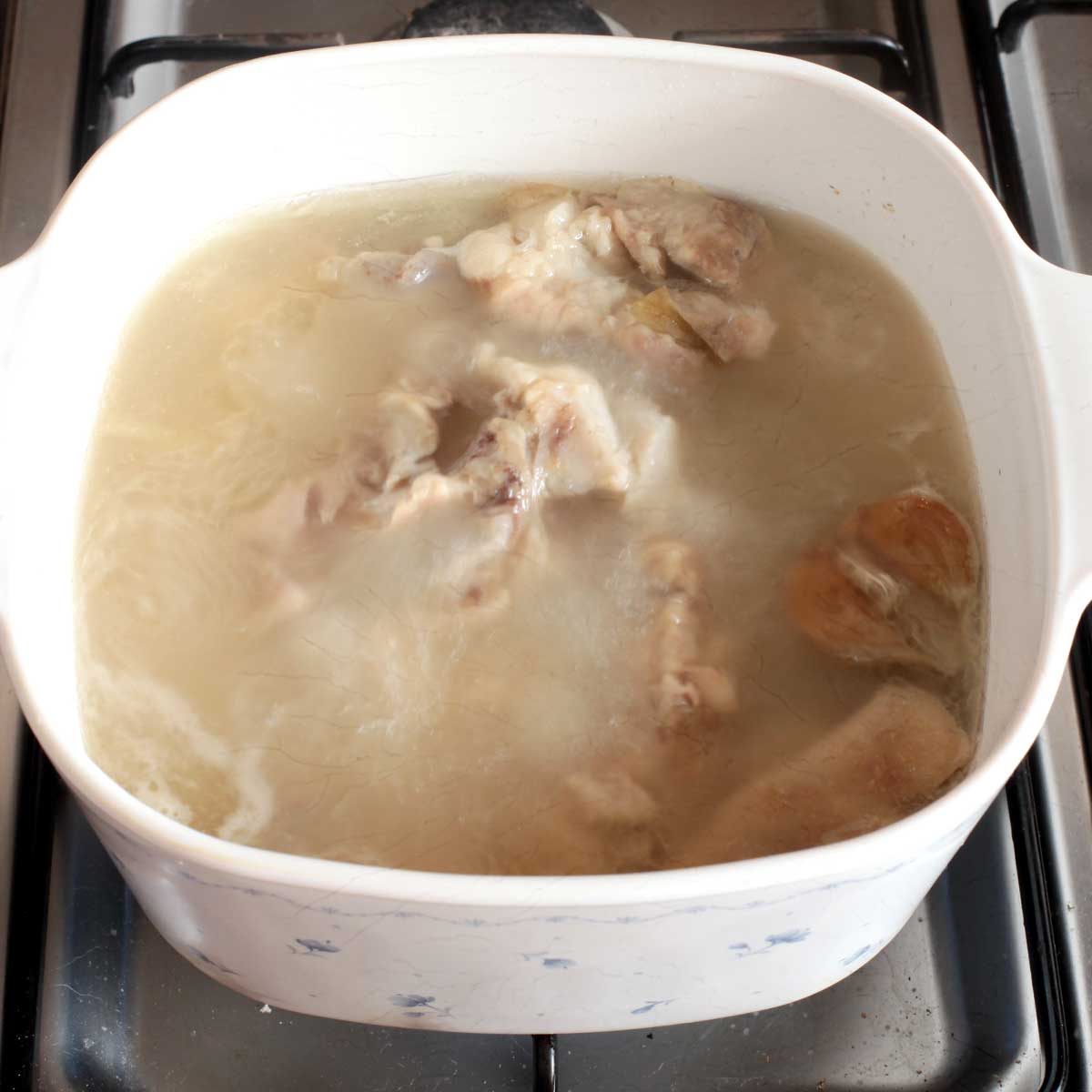
In order for the collagen to break down and get mixed in the liquid, two things are essential:
- A long cooking time.
- Temperature that is above simmering point. It is not enough that the liquid is simmering. It has to be boiling gently so that the pork hocks and trotters are continually tumbling in the broth. It is the constant agitation, together withthe heat, that breaks down the collagen.
Tips for making tonkotsu ramen broth
- It is not possible to make tonkotsu broth in the slow cooker because the low heat will not cause the required agitation. Trust me, I tried. Using the slow cooker to make broth may be more convenient but it won’t give you the rich, opaque and milky broth that is such a pleasure to slurp.
- Parboil the bones to get rid of scum. Boil hard for ten minutes. Strain the bones. Turn the tap on and bathe each bone in running water to remove all traces of blood and any dark matter. This is the key to making a milky broth.
- Start with plenty of water. Place the rinsed bones in the pot and cover with water twice or thrice the depth of the bones. As the liquid reduces during cooking, do not be tempted to add more water. You want the liquid to reduce because it is the reduced liquid that makes the best tonkotsu broth. By the time you’re done, you’ll be left with just a third or a quarter of the original amount of liquid. This is why truly good tonkotsu ramen commands such a high price.
What is the best test to determine if the bones have cooked long enough and the liquid has reduced sufficiently?
Okay, when the bones had cooked for ten hours, take a cup of broth and pour into a bowl. Take a larger bowl and half fill with ice. Place the bowl with the broth on the ice to cool the broth faster. Transfer to the fridge and chill for an hour or so.
Now, the test. Did the broth turn into a gel or is it still liquid? If the broth turned to gel, then, the collagen had broken down sufficiently. If the broth is still liquid, reheat the pot of bones and cook for another couple of hours.
Ramen Noodles
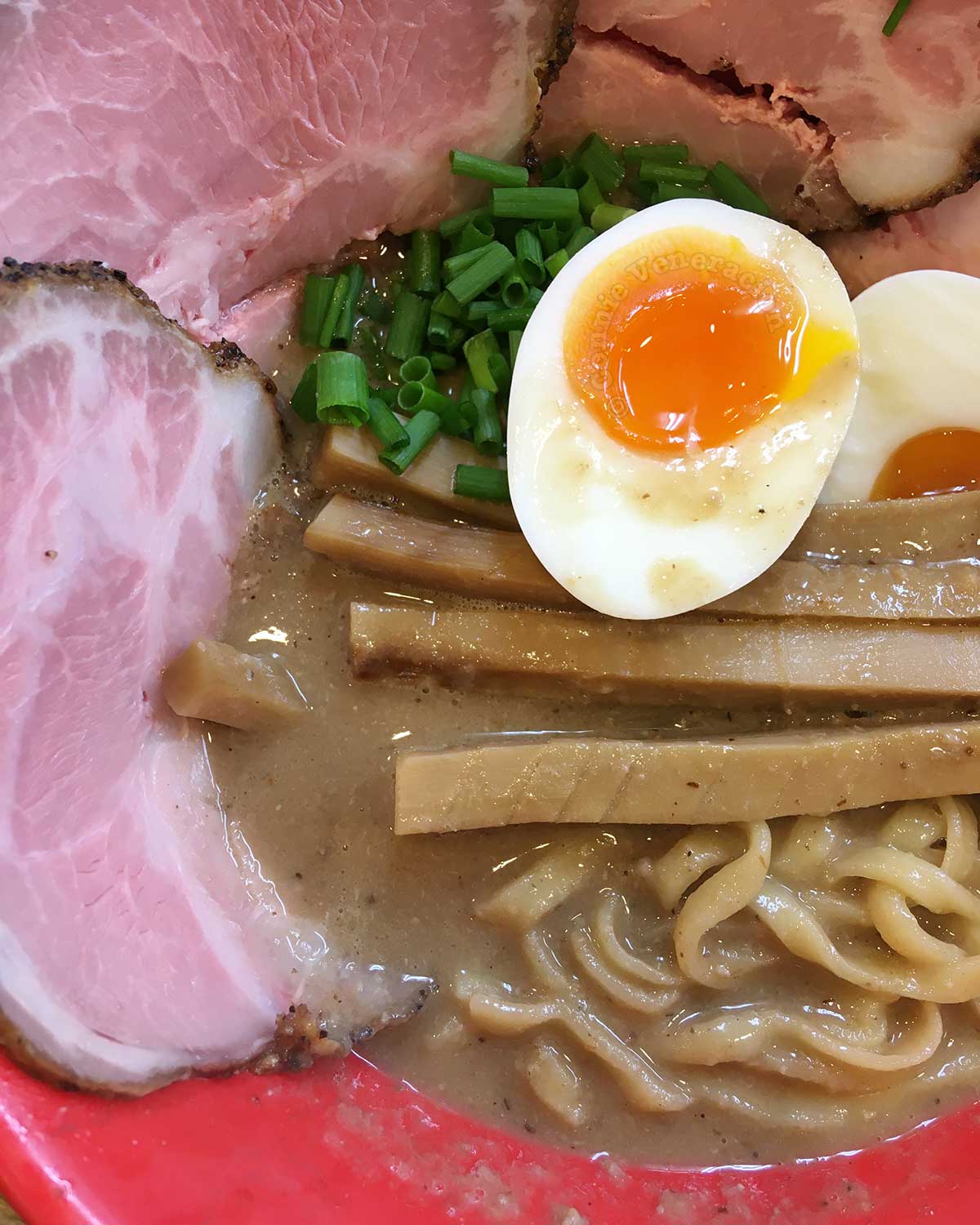
We’re done with ramen broth so let’s move on to the noodles. I used to define ramen by the size and shape of the noodles. How wrong I was. Ramen noodles can be straight or wavy. They can be thin, thick or somewhere in between. They can be round, squared or flat.
How to eat ramen: slurp it!
Western table manners frown at slurping food but, in Asia, that’s how to eat a bowl of piping hot noodle soup — including ramen. Why slurp the noodles? Three reasons:
- Ramen is meant to be eaten fast to prevent the noodles from softening in the hot broth and turning soggy.
- The slurping cools the noodles a bit so they don’t scorch your mouth.
- Relative to number two above, because you can eat the noodles faster, the broth stays hot and you can enjoy it, after finishing the noodles, before it turns cold.
But more than the slurping, or its absence, there is simply no singular way to eat long strands of noodles from a bowl of hot broth. I never noticed it before but it seems that even in my family, every one eats noodle soup differently.
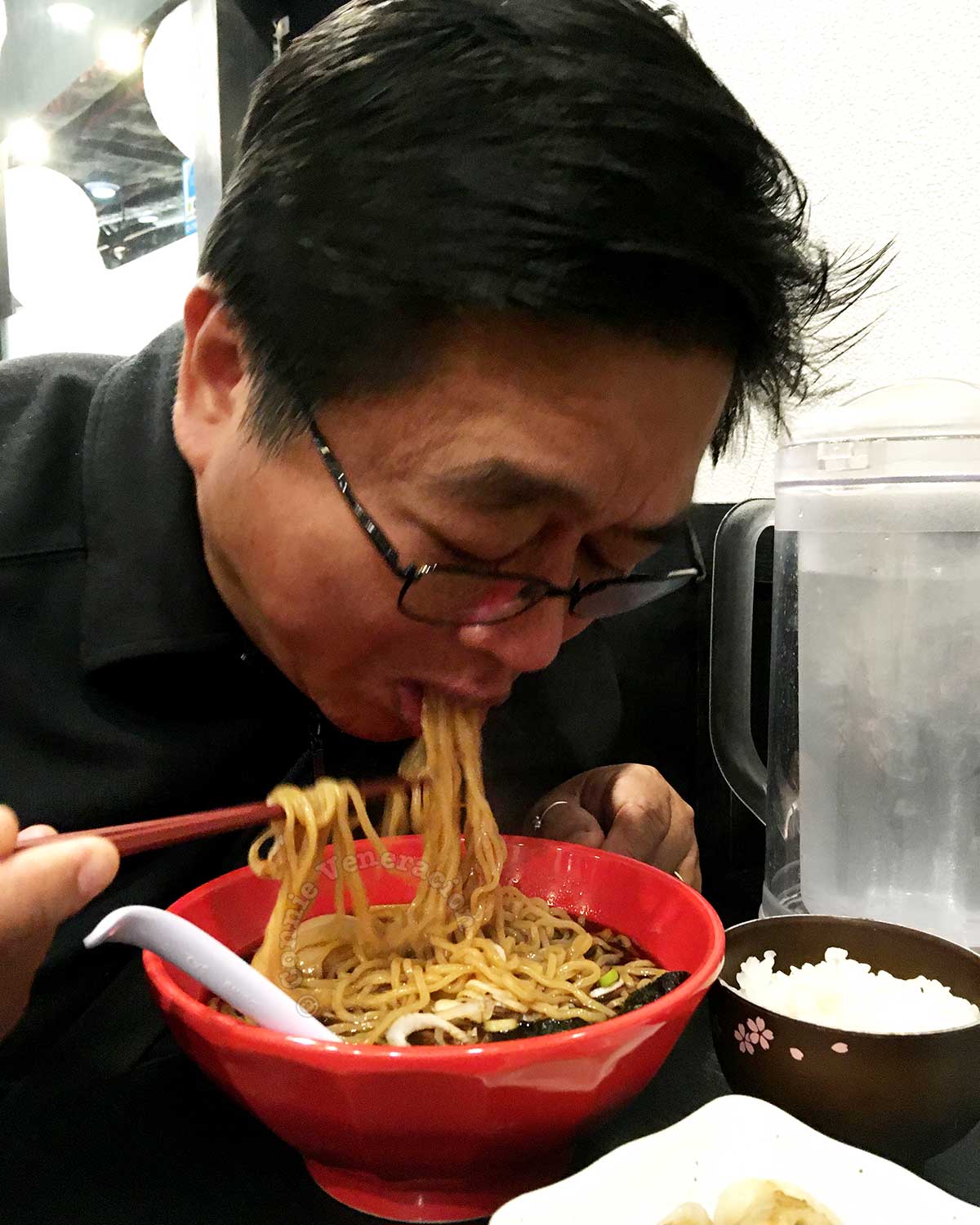
In my family, only Speedy knows how to slurp his ramen. He simply lifts the noodles with his chopsticks and slurp away.
Sam eats her noodles the same way minus the slurping, and she eats far more slowly than all of us.
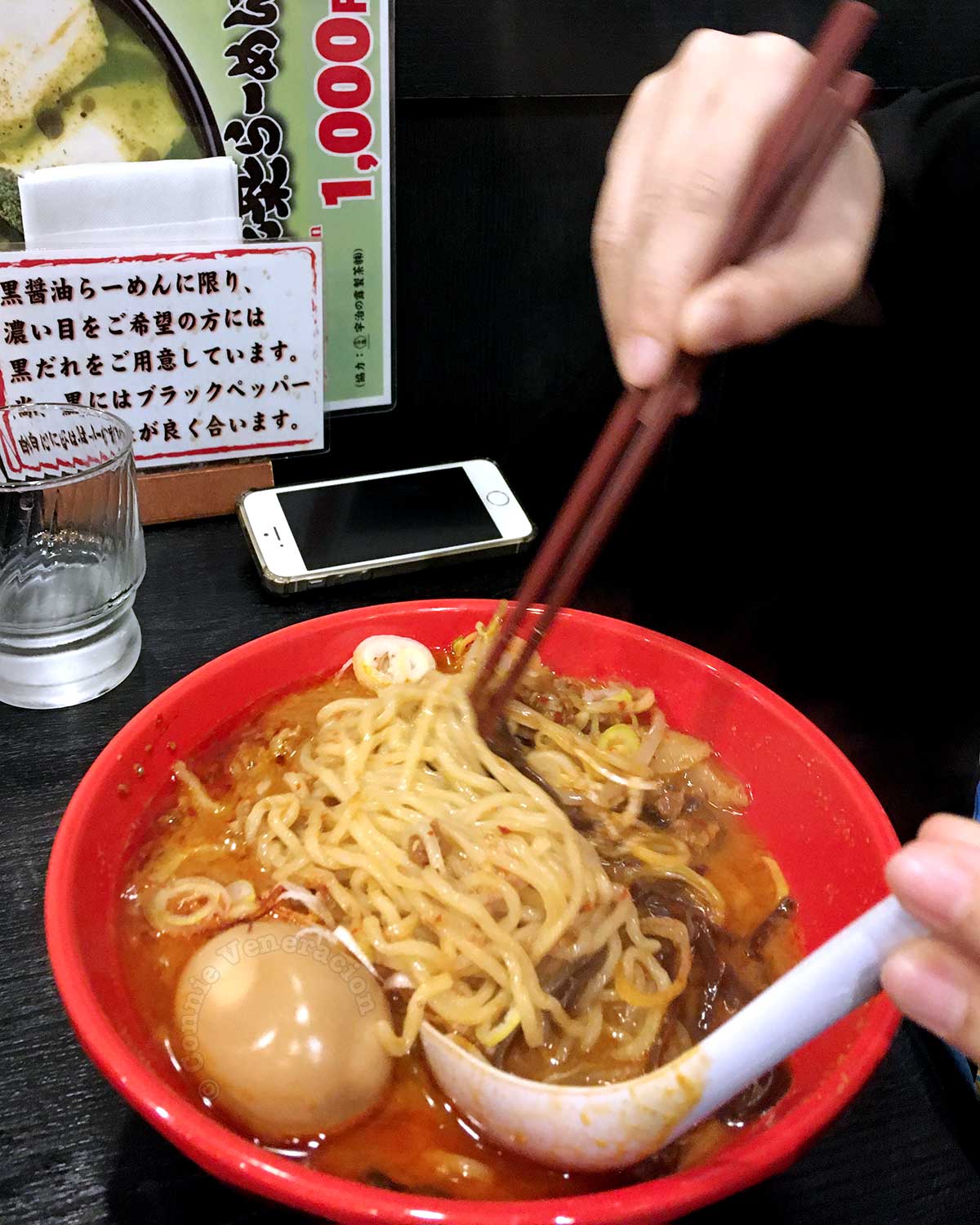
Alex does it differently. She lifts the noodles with her chopsticks, drops them into her soup spoon and lifts the spoon to her mouth to eat the noodles. No slurping either. Her speed? No one will ever beat Speedy, he’s really a fast eater no matter what the dish, so I’d say that Alex eats at an average speed.
Now, let me point you to a few recipes that will make your ramen experience even more exciting.

